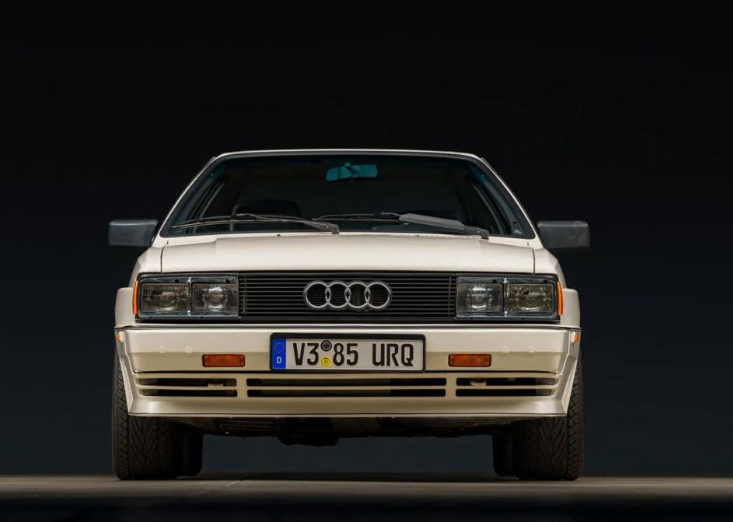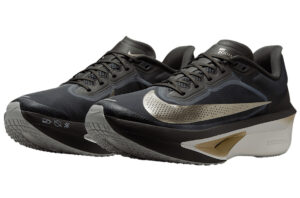The 1985 Audi Quattro is a car that needs no introduction for automotive enthusiasts, particularly those with an appreciation for rally racing and the technological advances that have shaped modern performance vehicles. Audi’s iconic Ur-Quattro was more than just a car—it was a revolution. It introduced Audi’s now-famous Quattro all-wheel-drive (AWD) system, which set the stage for a legacy of high-performance, all-weather cars that have made Audi a household name in the automotive world.
Recently, a rare 1985 Audi Quattro surfaced on “Bring a Trailer” (BaT), a platform known for offering enthusiasts the chance to purchase rare and well-preserved vehicles. With only 56,000 miles on the odometer, this particular example is a time capsule from the past, representing a golden era of automotive innovation. As we dive deeper into the significance of this car, it becomes clear that the Audi Quattro is more than just a collector’s item; it’s a symbol of technological prowess, motorsport dominance, and engineering excellence.
The Legacy of the Ur-Quattro
The Audi Quattro, often referred to as the “Ur-Quattro” to denote its status as the original model, was introduced in 1980. Its development was spurred by Audi’s desire to compete in the World Rally Championship (WRC), where the brand sought to challenge the rear-wheel-drive cars that had traditionally dominated the sport. At the time, AWD systems were mostly associated with off-road or utility vehicles, and no one had seriously considered using such a system in a performance car, much less a rally car.
Audi changed the game with the Quattro. Its AWD system allowed the car to maintain grip in conditions where rear-wheel-drive vehicles would struggle—whether it was on slick tarmac, gravel, snow, or mud. The car’s turbocharged inline-five engine, which produced around 200 horsepower, gave it a potent power-to-weight ratio, and the Quattro quickly made a name for itself in the rally world.
The Ur-Quattro’s impact was immediate. Audi became a dominant force in rally racing throughout the 1980s, and the Quattro AWD system became synonymous with high-performance vehicles designed to tackle any road or weather condition. This innovation didn’t just benefit Audi in motorsport; it fundamentally shifted how performance cars were designed and marketed. The introduction of all-wheel drive to the consumer market, in a time when front- and rear-wheel-drive vehicles were the norm, marked the beginning of a new era of high-performance road cars that could perform just as well in poor weather as they could on dry roads.
A Rare Find on Bring a Trailer
The 1985 Audi Quattro currently listed on “Bring a Trailer” represents a rare opportunity for collectors and enthusiasts alike. With only 56,000 miles on the clock, it’s a well-preserved example of a car that is increasingly difficult to find in such pristine condition. Many Ur-Quattros have been modified, raced, or simply worn down by time, making this particular model’s condition stand out.
Its iconic boxy shape, muscular stance, and distinctive flared wheel arches give the Quattro a purposeful look that still resonates today. The design may seem dated by modern standards, but for fans of 1980s automotive design, the Quattro’s angular aesthetic is a reminder of an era when form followed function, and when cars were designed with performance, not just luxury or style, in mind.
Beneath the hood of this particular model sits the legendary turbocharged 2.1-liter inline-five engine. Producing around 200 horsepower, this engine was groundbreaking in its day and still holds up remarkably well by modern standards. It’s paired with a five-speed manual transmission, offering a direct and engaging driving experience that’s becoming increasingly rare in today’s world of automatic gearboxes and electric vehicles.
But the real star of the show is the Quattro AWD system, which set the template for all-wheel-drive performance cars for decades to come. In 1985, having two locking differentials was nearly unheard of in road cars, and it’s a testament to the Quattro’s motorsport pedigree. The system provides a level of control and stability that’s impressive even by modern standards, allowing the car to tackle everything from tight corners to slippery surfaces with confidence.
The Driving Experience: Raw and Engaging
Driving a 1985 Audi Quattro is a completely different experience from modern performance cars. While contemporary sports cars are often loaded with driver aids and technology that enhance performance, the Quattro offers a more raw, mechanical connection to the road. The unassisted steering provides a direct, tactile feel, and the turbocharged engine delivers a distinctive sound that adds to the car’s character.
The acceleration, while not blisteringly fast by modern standards, is more than adequate for a car of this vintage. The turbo lag, which is significant compared to today’s turbocharged engines, adds a sense of drama to the driving experience. You have to work for the power, but when it comes, it’s deeply satisfying. The manual transmission offers precise shifts, and the locking differentials give the driver an extra level of control, making the Quattro a joy to drive on twisty roads or uneven surfaces.
Inside, the Quattro’s cabin is simple but functional, with large analog gauges and switches that remind you that this car was built for driving, not for comfort or luxury. The seats, while firm, offer good support for spirited driving, and the overall layout of the interior feels purposeful and focused. It’s a reminder that the Quattro was designed with performance in mind, not as a luxury tourer.
Impression
As the years go by, the Audi Quattro’s status as a collectible classic continues to grow. Much of this can be attributed to its groundbreaking technology and its rally heritage, but it’s also a reflection of the car’s rarity. With so few well-preserved examples left on the market, owning an Ur-Quattro is becoming an increasingly exclusive privilege.
The particular model listed on “Bring a Trailer” is likely to attract significant interest from collectors due to its low mileage and well-preserved condition. As the prices of classic performance cars continue to rise, especially those with motorsport pedigree, it’s reasonable to expect that the value of this Quattro will appreciate in the coming years.
For enthusiasts, however, the real appeal of the Ur-Quattro lies not just in its potential as an investment, but in the experience it offers. Driving one of these cars is a reminder of a time when performance and innovation were at the forefront of automotive design, and when cars like the Audi Quattro were pushing the boundaries of what was possible.
The 1985 Audi Quattro is more than just a car—it’s a symbol of automotive innovation and motorsport success. Its introduction of all-wheel drive to the performance car segment changed the industry forever, and its rally pedigree cemented its place in automotive history. The rare example currently listed on “Bring a Trailer” offers a unique opportunity for collectors and enthusiasts to own a piece of that history.
As we move further into an era of electrification and autonomous driving, cars like the Quattro serve as a reminder of the visceral, analog experiences that defined automotive passion for so many years. It’s a car that will forever be remembered for its role in shaping the future of performance vehicles, and one that will continue to be celebrated by generations of enthusiasts to come.
No comments yet.








